All Posts
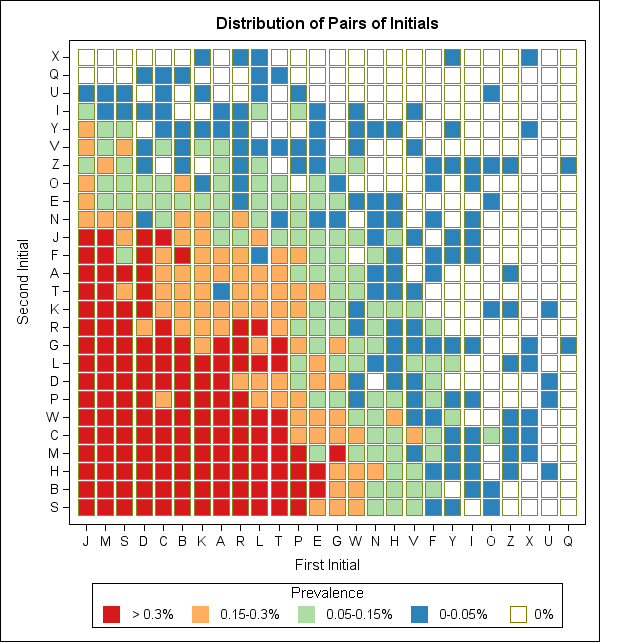
A colleague related the following story: He was taking notes at a meeting that was attended by a fairly large group of people (about 20). As each person made a comment or presented information, he recorded the two-letter initials of the person who spoke. After the meeting was over, he
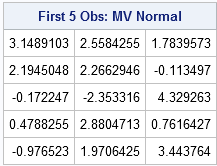
SAS/IML software is often used for sampling and simulation studies. For simulating data from univariate distributions, the RANDSEED and RANDGEN subroutines suffice to sample from a wide range of distributions. (I use the terms "sampling from a distribution" and "simulating data from a distribution" interchangeably.) For multivariate simulations, the IMLMLIB

AUTOEXEC.SAS wasn't enough for you. Yes, it's a sure-fire way to run SAS statements (such as LIBNAME assignments or macro definitions) whenever you start your SAS session, but you found it has limitations when used in configurations with lots of users who connect with SAS Enterprise Guide. Limitations such as:
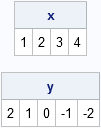
It is often useful to create a vector with elements that follow an arithmetic sequence. For example, {1, 2, 3, 4} and {10, 30, 50, 70} are vectors with evenly spaced values. This post describes several ways to create vectors such as these. The SAS/IML language has two ways to

Computing probabilities can be tricky. And if you are a statistician and you get them wrong, you feel pretty foolish. That's why I like to run a quick simulation just to make sure that the numbers that I think are correct are, in fact, correct. My last post of 2010

Appetizers usually play a significant role in ensuring a good restaurant experience…right? A good appetizer whets your appetite and gets you psyched and excited for the main course! This series of blog posts aims to do just that…whet your appetite for what’s in store at SAS Global Forum. In the
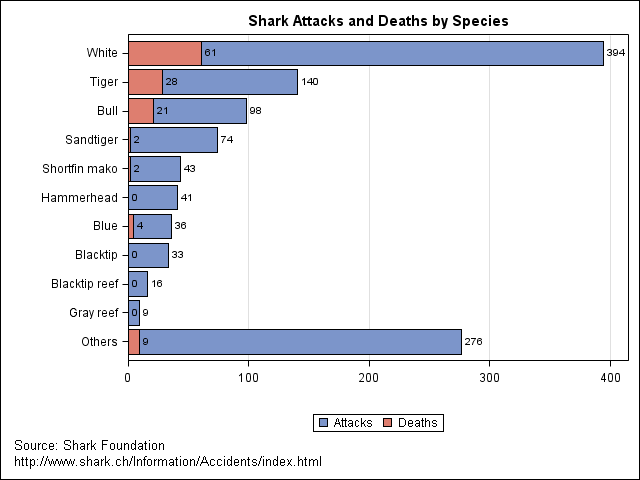
The Junk Chart blog discusses problems with a chart which (poorly) presents statistics on the prevalence of shark attacks by different species. Here is the same data presented by overlaying two bar charts by using the SGPLOT procedure. I think this approach works well because the number of deaths is

Over at the SAS/IML Discussion Forum, someone posted an interesting question about how to create a special matrix that contains all combinations of zeros and ones for a given size. Specifically, the problem is as follows. Given an integer n ≥ 1, produce a matrix with 2n rows and n

Most people don’t think about government when they hear the word “innovation”, but it’s happening, and has been since long before “The Great Recession.” However, the current economic conditions have certainly moved things along. Government responds very similarly to private industry when faced with challenges. SAS manages to do relatively

It's a New Year and I'm ready to make some resolutions. Last year I launched this blog with my Hello, World post in which I said: In this blog I intend to discuss, describe, and disseminate ideas related to statistical programming with the SAS/IML language.... I will present tips and
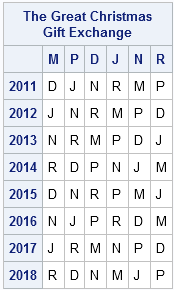
In many families, siblings draw names so that each family member and spouse gives and receives exactly one present. This year there was a little bit of controversy when a family member noticed that once again she was assigned to give presents to me. This post includes my response to

If outliers could scream, would we be so cavalier about removing them from our history, and excluding them from our statistical forecasting models? Well, maybe we would – if they screamed all the time, and for no good reason. (This sentiment is adapted from my favorite of the many Deep

Many years ago I served as the program manager for the NC Alternative Fuel Vehicles program. The goal of the program was to promote the usage of various vehicle types that were alternatives to gasoline powered vehicles. One of the main programs in this set of grants was the Clean

A customer phoned up SAS Technical Support the other day with a problem. (Yes, that happens occasionally...) When he ran a certain program through SAS Enterprise Guide, the program didn't seem to complete and no results were returned. Here is a snippet of the program (modified a bit to make
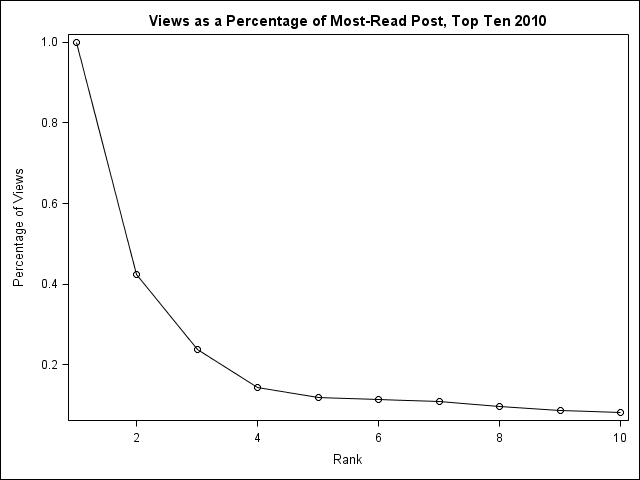
When I wake up early to write my blog, I often wonder, "Is anyone going to read this?" Apparently so. I started writing The DO Loop in September, 2010. Since then, I've posted about 60 entries about statistical programming with SAS/IML software. Since this is a statistical blog, it is





